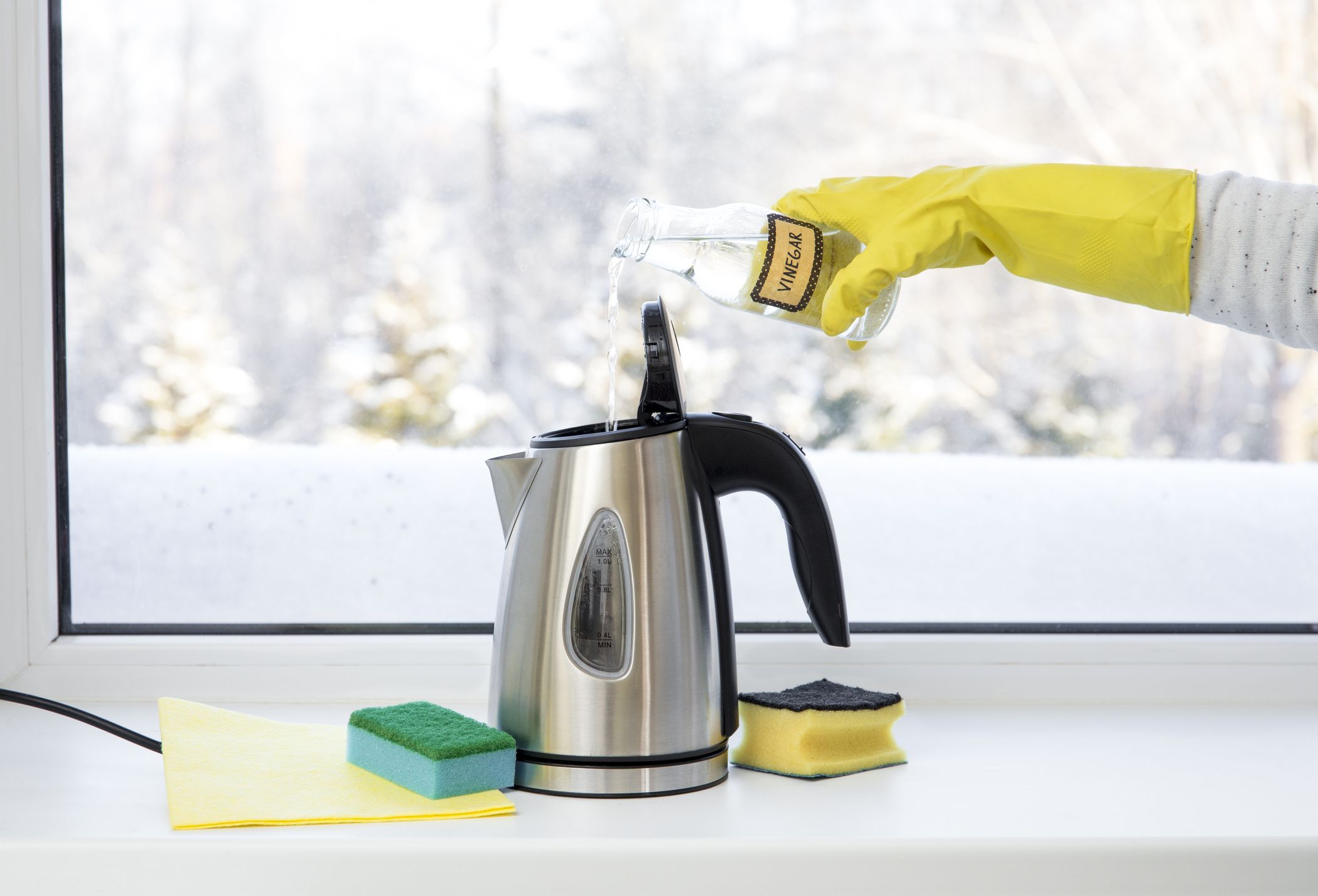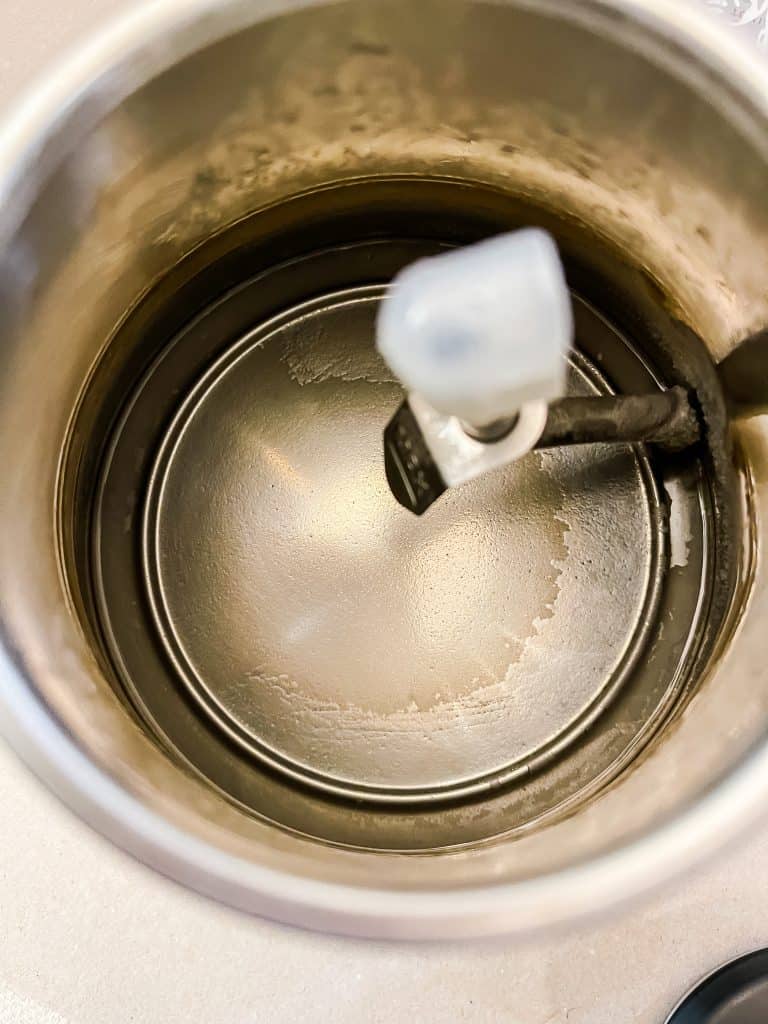How to Clean Electric Kettle Inside: Easy and Effective Tips

Cleaning an electric kettle inside is simple and quick. Regular cleaning keeps your kettle running well and ensures better-tasting water.
Many people use electric kettles daily for boiling water. Over time, minerals build up inside, affecting performance and taste. It’s important to clean the inside of your kettle regularly. This helps remove limescale and other deposits. A clean kettle boils water faster and lasts longer.
Whether you use it for tea, coffee, or cooking, a clean kettle makes a difference. In this guide, we’ll show you easy steps to clean your electric kettle. No special tools or cleaning products needed.

Credit: www.youtube.com
Preparation Steps
Unplug the kettle from the power source. This ensures safety. Then, let it cool down completely. Hot kettles can cause burns. Always handle with care.
Collect all items you need. You will need white vinegar, water, and a soft cloth. A soft brush can help with tough spots. Make sure to have these on hand.
Basic Cleaning
Descale an electric kettle by filling it with a mix of water and white vinegar. Boil the solution and let it sit for 15 minutes. Rinse thoroughly with fresh water to remove any remaining residue.
Rinse And Wipe
Unplug the kettle first. Fill it halfway with water. Swirl the water around inside. Pour out the water. Use a soft cloth to wipe the inside. Be sure to reach all corners. Rinse again to remove any loose dirt. Dry the inside with a clean towel.
Check For Residue
Look inside the kettle. Check for any white spots. These are lime deposits. Use a damp cloth to scrub them. If stubborn, use a mix of water and vinegar. Fill the kettle with this mix. Let it sit for 15 minutes. Pour out and rinse well. Wipe the inside dry.
Using Vinegar Solution
Clean the inside of an electric kettle by using a vinegar solution. Mix equal parts of water and vinegar. Boil the solution in the kettle, then rinse thoroughly.
Mixing Vinegar And Water
Mix equal parts of white vinegar and water. Fill the kettle halfway with this solution. Make sure it covers the bottom completely.
Boiling The Solution
Turn on the kettle and let the solution boil. Once it starts boiling, turn off the kettle. Let the hot solution sit for 20 minutes. This helps to remove hard water stains and mineral deposits. After 20 minutes, pour out the solution. Rinse the kettle with clean water. Repeat if needed for stubborn stains.
Using Lemon Juice
First, get a lemon. Cut it in half. Squeeze the juice into a cup. Add two cups of water. Mix well. Now, you have a lemon solution. This is safe for your kettle.
Pour the lemon solution into the kettle. Make sure it covers the bottom. Turn on the kettle. Let it boil. Once it boils, turn it off. Let the solution sit for 30 minutes. The lemon will help remove stains and smells. After 30 minutes, pour out the solution. Rinse the kettle with clean water. Your kettle should be clean and fresh.
Using Baking Soda
Mix baking soda with water to form a thick paste. The paste should be smooth and easy to spread. Apply the paste to the inside of the kettle. Focus on any stains or build-up areas.
Use a soft brush to scrub the inside of the kettle. Scrub gently to avoid scratching the surface. Rinse the kettle well with water. Make sure all the baking soda paste is gone. Dry the kettle with a clean cloth before using it again.

Credit: www.countryliving.com
Descaling The Kettle
White flakes in water are a sign. They mean scale buildup inside. If the kettle takes longer to boil, that’s another sign. You might notice a chalky texture inside the kettle. Sometimes, the water may taste different. These are all signs you need to descale.
Vinegar is a great descaler. Use white vinegar for best results. Lemon juice also works well. Some people prefer baking soda. There are also commercial descaling products available. Always follow the instructions on the product.
Rinsing And Drying
Use clean water to rinse the kettle well. Swirl the water around to remove any remaining vinegar or cleaning solution. Repeat this step a few times. Ensure no cleaning residue is left inside.
After rinsing, leave the kettle open. Let it air dry fully. This prevents moisture buildup. Wipe the outside with a dry cloth. Store the kettle in a dry place.

Credit: amysadlerdesigns.com
Maintenance Tips
Set a reminder to clean your kettle. Doing it every two weeks is best. This keeps it free of limescale and dirt. Use a soft cloth and mild soap. Rinse well to remove all soap. Never put the kettle in water. Always clean the outside too.
Use filtered water to reduce scale. Boil only the amount you need. This helps keep the kettle clean. Empty the kettle after each use. Do not let water sit in it. Clean the filter often. This stops scale from forming.
Conclusion
Cleaning your electric kettle is essential. It ensures better performance and longevity. Regular descaling prevents buildup and keeps your water tasting fresh. Simple methods, like using vinegar or lemon, are effective. Always rinse thoroughly after cleaning. This avoids any lingering taste. Keep your kettle dry when not in use. Follow these tips to maintain a spotless electric kettle. Enjoy your hot beverages without any worry.


